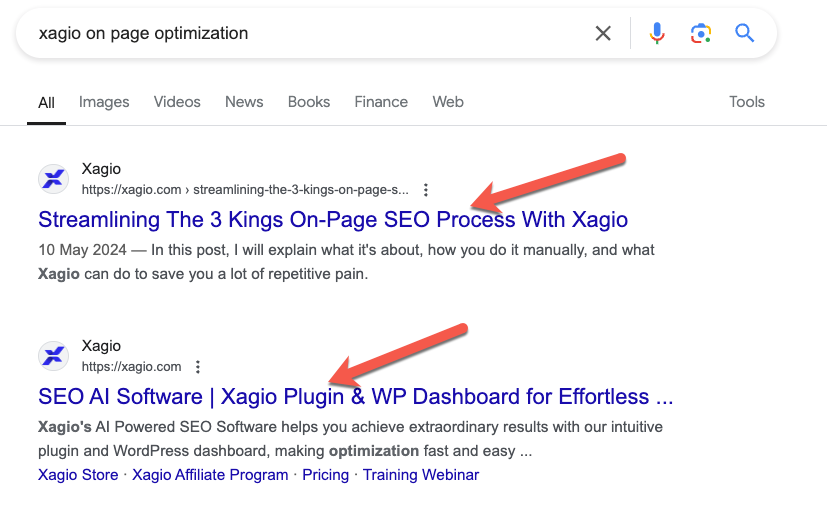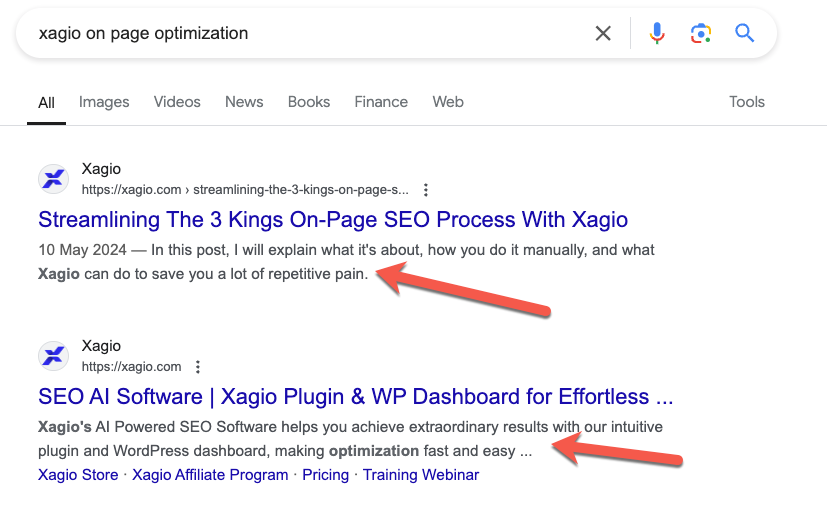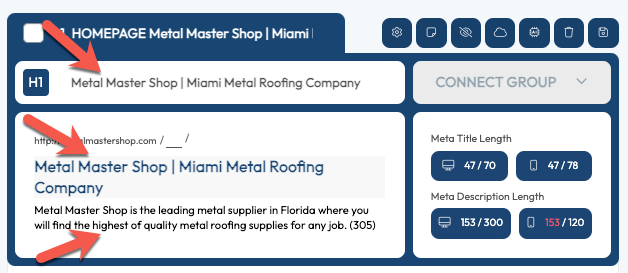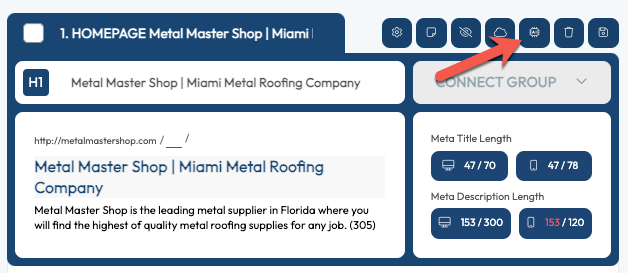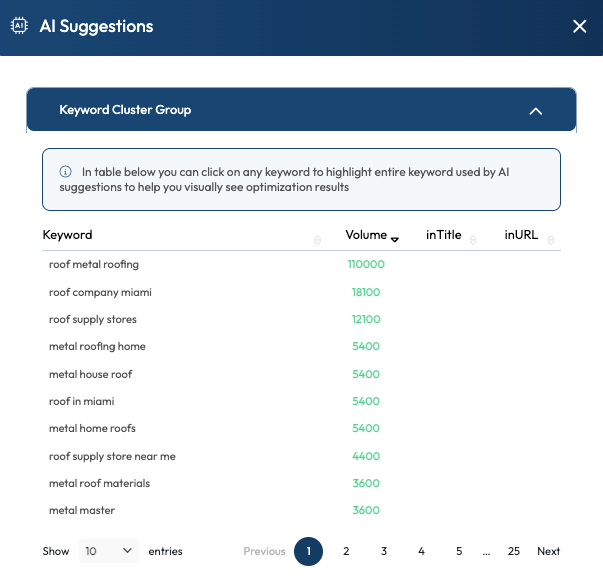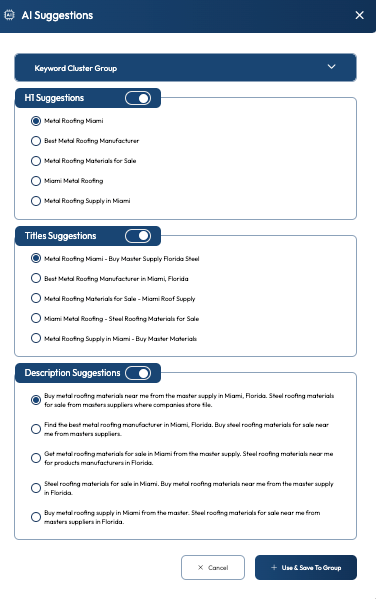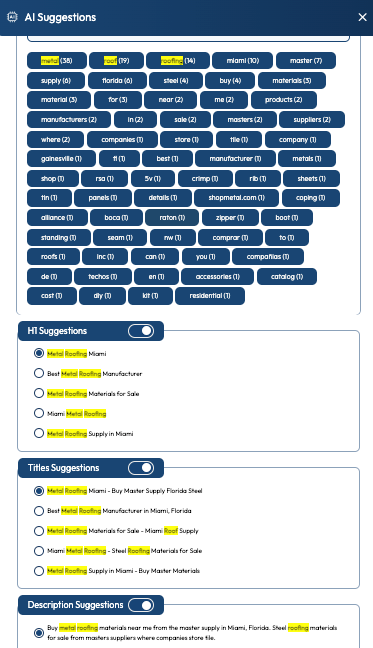Effectively analyzing and optimizing a website’s meta tags is one of the most important SEO tasks, and when done right, it’s the one task that can influence rankings and traffic the most.
The problem for most SEOs is that analyzing and optimizing meta tags requires lots of time, effort, and creativity.
If you’ve ever had to do this for a site with hundreds of pages, you know how mind-numbingly frustrating it can be as well.
However, using Xagio’s meta tag checker and AI optimization tools can turn a 2-week workload into less than an hour, and you won’t need to put your creative skills to the test either.
Why Is It Important To Check Meta Tags?
There are three critical parts that every SEO strategy has to cover in order to see improvements in search engines and organic traffic:
- Keyword research
- On-page optimization
- Off-page optimization (backlinks)
What I have always been teaching is that getting the first two right will make the third part of the strategy easier, faster, and a hell of a lot cheaper.
Whether you’re starting a new project or taking on an existing one where you need to analyze and optimize hundreds of pages, the on-page-related tasks all start with one of the most important things: meta-tag analysis.
Typically, this involves listing out all the pages on a website and checking how and whether certain meta tags have been optimized.
It’s definitely not a task you want to do manually by checking each page’s HTML code, but even meta tag checker tools offer a limited amount of time-saving.
I’ll show you Xagio’s power shortly, but let’s first look at the meta tags you need to focus on.
What Meta Tags Should You Focus On?
There are endless different HTML tags, but from an SEO perspective, there are only three that are important for delivering results in search engines.
1. H1 Tag
The H1 tag is used to designate the visible heading of a webpage. Depending on your website settings, the text contained in this tag will appear in a large and bold font at the top of the page.
It’s one of the three important on-page SEO tags often referred to as the 3 Kings, but it’s also one tag where you need to be very creative to avoid keyword stuffing and achieve a heading that immediately attracts interest.
You should aim to get your main focus keyword into the H1 tag in a natural way and as close to the start as possible.
2. SEO Title Tag
Many people confuse the Title tag with the heading that appears at the top of a webpage, but this tag is entirely different.
You can’t actually see the title tag in webpage content unless you look at the HTML code.
So, why is this tag so important?
It essentially is a tag that Google and other search engines use to identify what a webpage is about and then display on the search results page.
Because Google pays so much attention to this tag, it’s an excellent opportunity to add your main keyword plus other partial keywords that you can fit in.
The tricky part is making this unique compared to the H1 tag and being creative enough to add as many keywords as possible without making it look and read suspicious.
3. Meta Description Tag
The meta description is one area where your creativity can have the biggest impact, as you have a lot more characters to use compared to the H1 and title tags.
It’s vital from an SEO perspective, but if you word the meta description in a clever way, then you can also increase your click-through rate from search engines.
Google displays the meta description directly on the search results page under the title, with the goal being to let readers know what the page is about.
You have a huge opportunity to fit many partial keywords into the meta description, but be careful about keyword stuffing and over-optimizing the text.
Fortunately, Xagio has a solution to help you with this.
You can learn more in our meta tags for SEO blog post.
Xagio Goes Beyond The Typical Meta Tag Analyzer Tool
The typical meta tag analyzer tool will provide you with a report on a page-by-page basis; in many cases, you have to manually enter every one of your website’s pages.
Xagio not only automates gathering your entire website’s meta tags but also provides features to optimize those tags for all your pages in a matter of minutes.
Analyze Existing Meta Tags
The most powerful tool you have with Xagio is the meta tag analyzer built into Project Planner Audits.
If you have an existing website that you want to fully optimize, then the best place to start is to install the Xagio plugin in WordPress and link it to your email.
Then, navigate to the Project Planner Section and click on the “Import My Keywords & Rankings” button.
Xagio will run an Audit on your website and load all the pages along with ranking keywords for each page.
You’ll also notice that for each page, Xagio will display the last known H1, Title, and meta description tags.
The best part is that this happens in less than 10 seconds, even if you have dozens of pages to analyze.
It’s infinitely faster than pretty much every other meta tag analyzer tool available.
But Xagio’s capabilities don’t end there.
Automate Meta Tag Optimization With AI
Now that you have an audit of your website with all the important meta tags listed out in one convenient project view, it’s time to let Xagio wow you even more.
The audit you ran in the previous step pulls in all of a website’s pages along with ranking keywords.
For an established website with good rankings, each page will likely show a list of keywords. But it’s possible that new websites or under-optimized ones won’t have keywords for a lot of the pages.
If that happens, it’s best to go through competitor keyword analysis and combine the results into one master project. You can learn more about this KW research process on our blog.
Once you have an audit of your website with all pages and target keywords listed, you can use Xagio’s AI Optimization feature to save a ton of tedious work.
Click on the “Optimize with AI” button at the top of a keyword cluster.
Xagio will present you with the list of keywords in that group and you can either choose the one you want to focus on or let Xagio make that decision for you.
Xagio then uses that keyword list to come up with five recommendations for each of the H1, title, and meta description tags. You can then either choose from the list or make modifications to the suggestions.
Another powerful feature of Xagio’s keyword cloud optimization is that you can visualize the keywords in the suggestions.
Simply open the Keyword Cluster Group section at the top of the screen and select the words you want to make sure are included in the meta tags.
Xagio then highlights those words, making it easy and fast to confirm optimum meta-tag optimization.
It’s an extremely powerful tool that helps you see exactly which suggestions are most suitable, while also having maximum flexibility to add your own improvements.
This entire process can take less than 15 seconds per page and eliminates the need for challenging your creativity and patience.
It’s meta tag analysis and optimization with ease and speed.
Start Using Xagio For Meta Tag Optimization
Meta tag analysis and optimization are too important to leave it to your patience and creativity. And when you can save weeks’ worth of work on just one task, it’s a feature that you simply can’t afford to miss out on.
Start using Xagio as your meta tag analyzer tool of choice and see how quickly you can complete one of the most important and effective SEO tasks.
Also, make sure that you have enough XAGS in your account to use premium features like Audits, AI Wizards, and AI Optimization.
You can learn more about topping up your account with XAGS in our introduction blog post that gives you different options.
